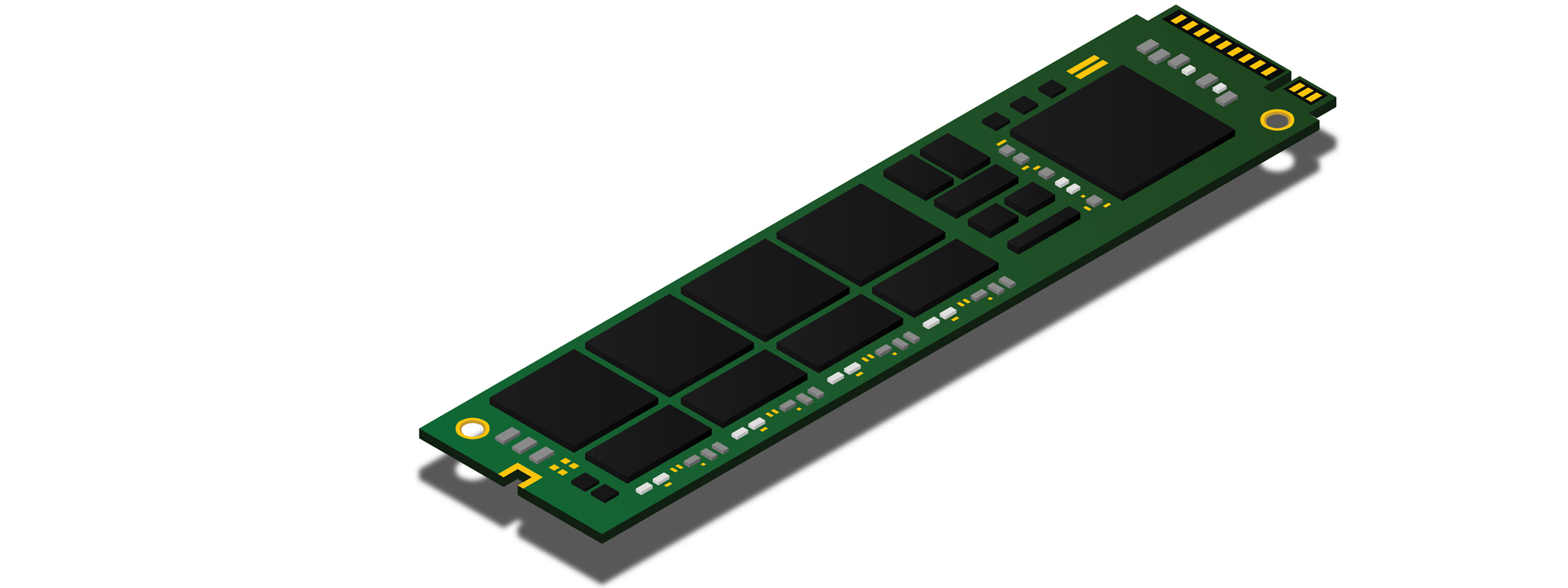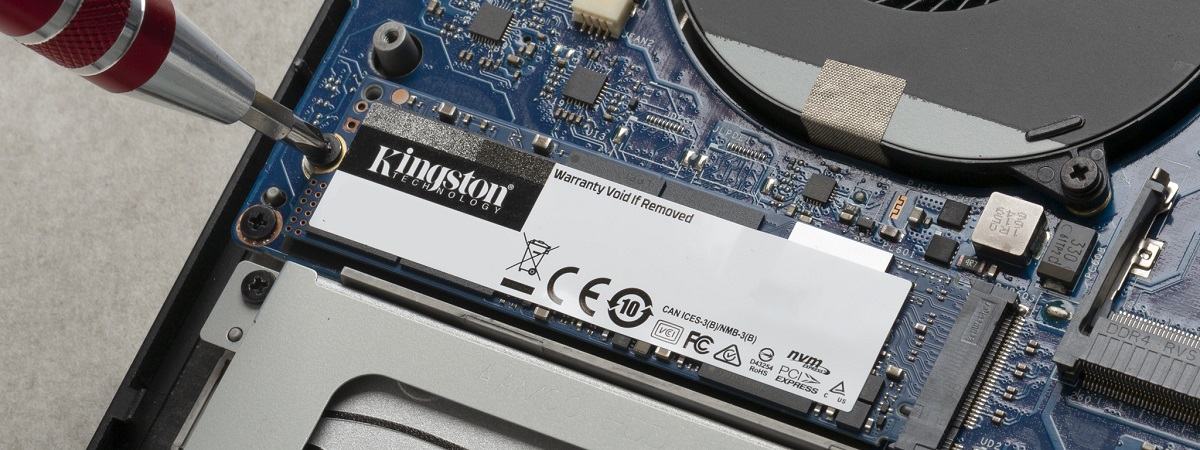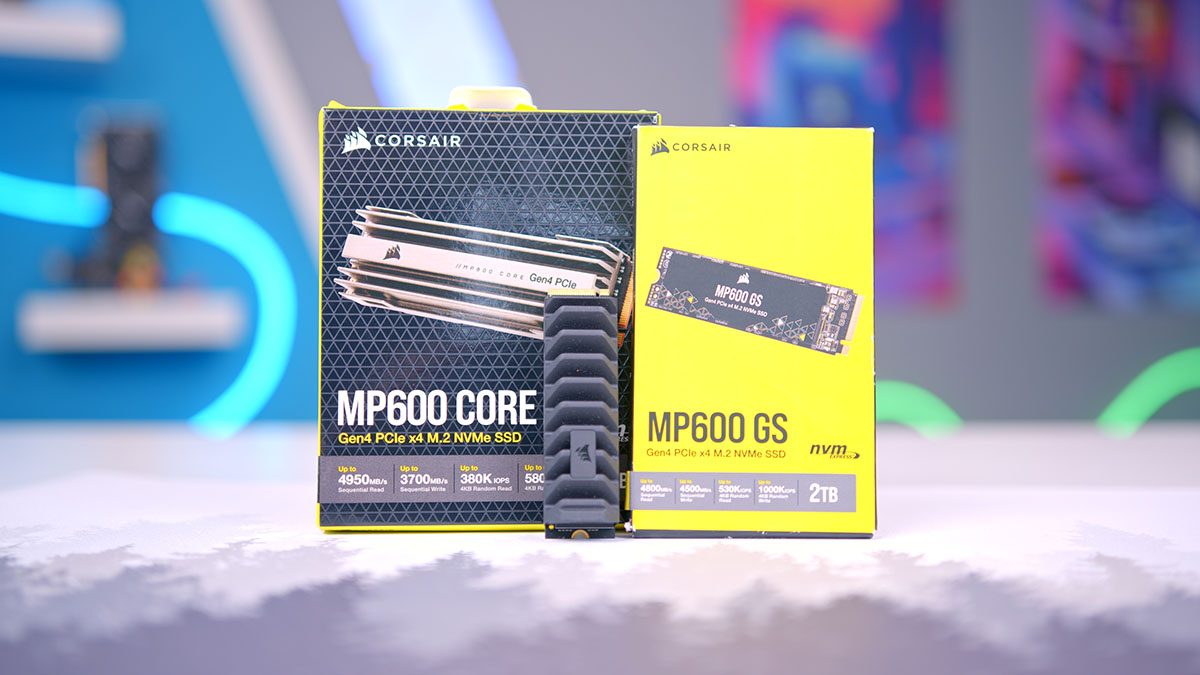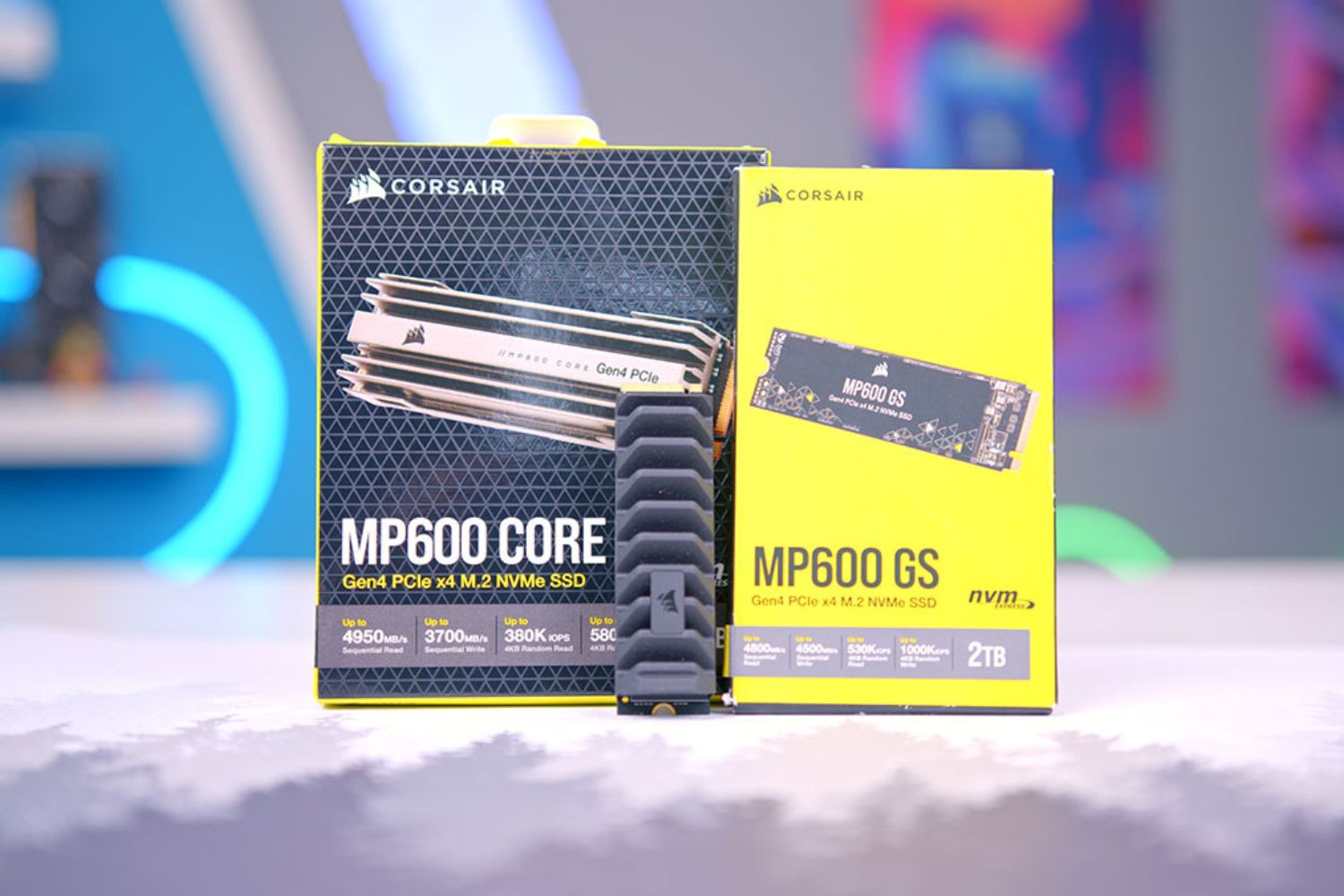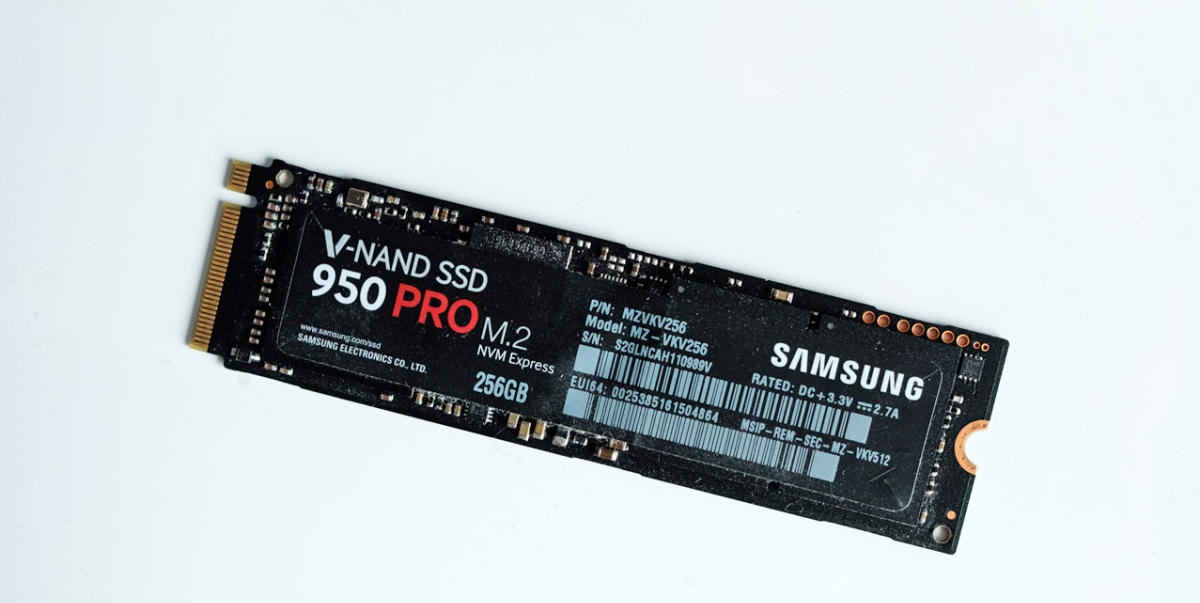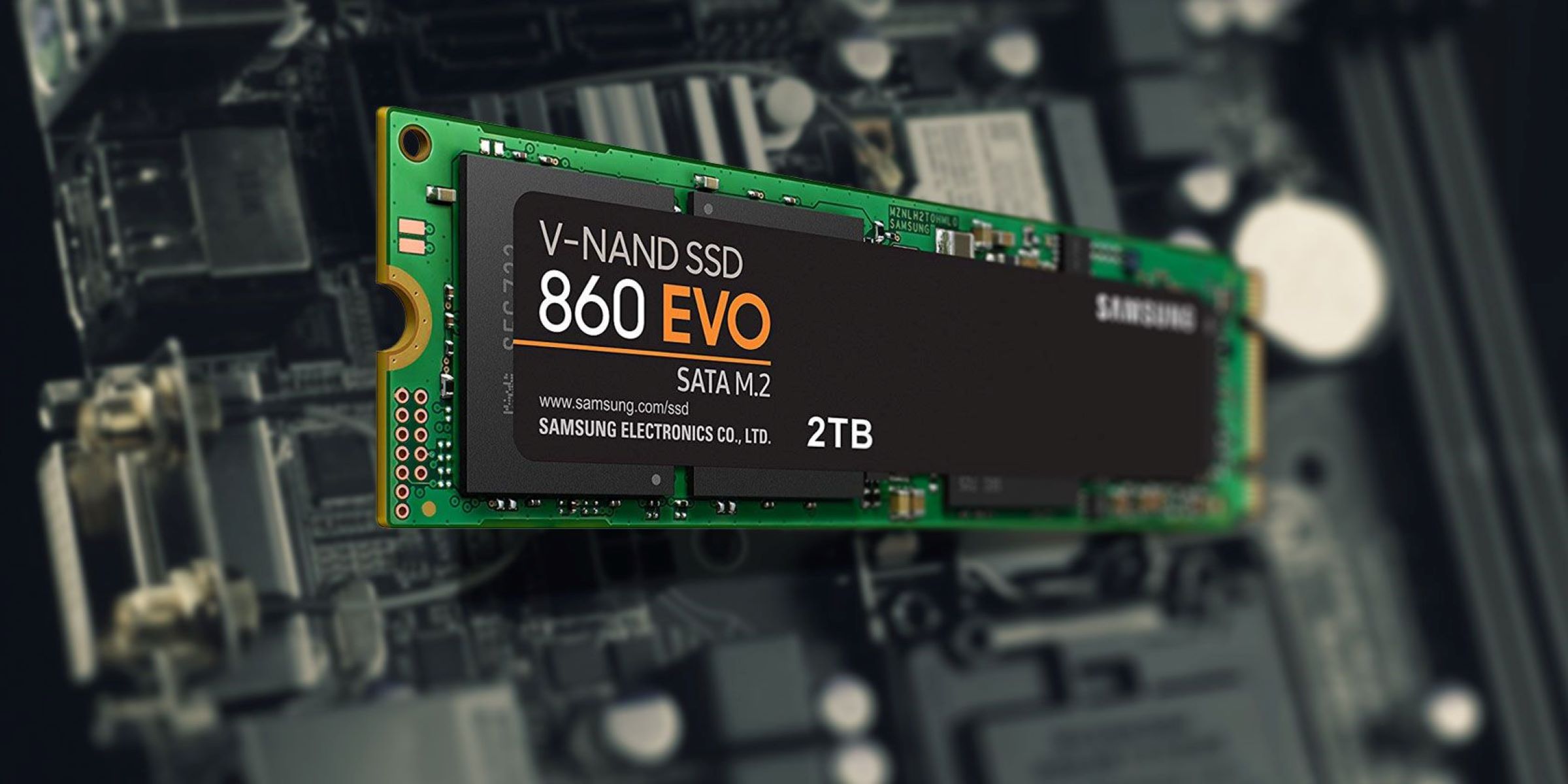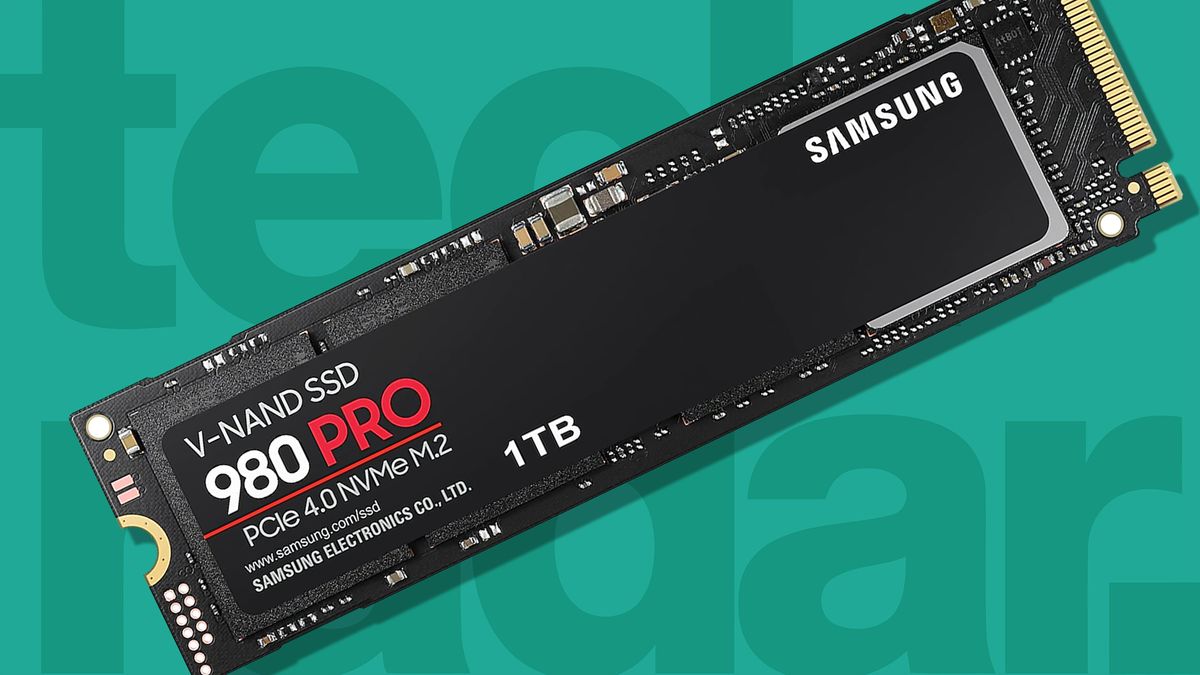Overview
Welcome to the world of PCIE Nvme SSDs! If you’re wondering what they are and why they’re generating so much buzz in the tech community, you’ve come to the right place. PCIE Nvme SSDs are an innovative storage solution that brings cutting-edge technology to your computer, providing lightning-fast performance and enhancing your overall computing experience.
Nvme, which stands for Non-Volatile Memory Express, is a protocol designed explicitly for solid-state drives (SSDs). It leverages the high-speed PCI Express (PCIE) interface to deliver exceptional data transfer rates and significantly reduce latency compared to traditional SATA SSDs. The combination of the PCIE interface and the Nvme protocol makes PCIE Nvme SSDs the fastest storage option available for consumer PCs.
When it comes to performance, PCIE Nvme SSDs leave traditional hard drives in the dust. By using flash memory technology instead of spinning disks, they eliminate mechanical limitations and deliver near-instantaneous access to your files and applications. Whether you’re a gamer seeking faster loading times, a content creator dealing with large media files, or a professional looking to optimize productivity, PCIE Nvme SSDs can offer a remarkable boost in speed and efficiency.
Not only do PCIE Nvme SSDs provide incredible performance, but they also offer other benefits that set them apart from SATA SSDs. One of the key advantages is their compact form factor. PCIE Nvme SSDs are typically smaller and lighter, making them ideal for laptops and compact PC builds where space is limited. Additionally, they consume less power, resulting in improved energy efficiency and longer battery life for portable devices.
Another significant advantage of PCIE Nvme SSDs is their scalability. With the PCIE interface offering multiple lanes, you can easily expand your storage capacity by adding more drives, without compromising performance. This flexibility allows you to future-proof your system and adapt to growing storage needs.
Now that we’ve covered the basics, it’s time to delve deeper into how PCIE Nvme SSDs work and explore the differences between PCIE Nvme and SATA SSDs. Let’s continue our journey into the world of lightning-fast storage!
What is PCIE Nvme SSD?
PCIE Nvme SSD, short for Peripheral Component Interconnect Express Non-Volatile Memory Express Solid-State Drive, is a storage device that utilizes the PCIE interface and the Nvme protocol to deliver superior performance compared to traditional storage options.
The PCIE interface is a high-speed data transfer technology commonly used in computer systems to connect various hardware components, such as graphics cards and network cards. With its wide bandwidth capabilities, the PCIE interface allows for faster and more efficient data communication between these components.
On the other hand, Nvme is a protocol specifically designed to optimize the performance of SSDs. It takes advantage of the low-latency and high-bandwidth capabilities of the PCIE interface to provide lightning-fast access to stored data.
Combined, PCIE Nvme SSDs offer several advantages over other storage options. Firstly, they offer significantly faster data transfer rates compared to traditional SATA SSDs. This means that loading times for applications, games, and files are drastically reduced, leading to a more responsive and seamless computing experience.
Furthermore, PCIE Nvme SSDs have extremely low latency, which refers to the time it takes for the drive to respond to a data request. This low latency allows for near-instantaneous access to data, resulting in improved system responsiveness and smoother multitasking.
PCIE Nvme SSDs also excel in random read and write performance, making them ideal for tasks that require intensive data operations, such as video editing, rendering, and database management. This is due to their ability to handle a high number of input/output operations per second (IOPS), ensuring faster data processing and improved overall performance.
In addition to speed, PCIE Nvme SSDs are known for their compact form factor. The smaller physical size of these drives makes them perfect for laptops and small form factor PCs, where space is limited. Their compact design also allows for more flexibility in terms of installation options, making them suitable for a wide range of computer setups.
Overall, PCIE Nvme SSDs offer a significant performance upgrade over traditional storage options. Their fast data transfer rates, low latency, and compact form factor make them an excellent choice for users who want to optimize their computer’s speed and responsiveness. Whether you’re a gamer, content creator, or professional user, PCIE Nvme SSDs are sure to enhance your computing experience.
Benefits of PCIE Nvme SSD
PCIE Nvme SSDs offer a range of benefits, making them a popular choice for those seeking an upgrade in storage performance. Let’s explore some of the key advantages of using a PCIE Nvme SSD.
1. Blazing-fast Speed: PCIE Nvme SSDs are renowned for their exceptional speed and performance. With data transfer rates that can exceed 3,500 megabytes per second, these drives offer lightning-fast read and write speeds, resulting in quicker application loading times, faster file transfers, and reduced system boot times. Whether you’re a gamer looking for shorter load times or a professional working with large media files, the speed of a PCIE Nvme SSD can significantly enhance your productivity and overall computing experience.
2. Low Latency: PCIE Nvme SSDs have incredibly low latency, meaning they respond quickly to data requests. This low latency translates to near-instantaneous access to your files and applications, resulting in a more responsive and snappy system. Tasks such as opening programs, accessing files, and running multiple applications simultaneously will be noticeably faster, allowing you to work more efficiently and seamlessly.
3. Enhanced Productivity: With faster data access and reduced load times, PCIE Nvme SSDs can significantly boost your productivity. Whether you’re working with large datasets, editing high-resolution videos, or running resource-intensive applications, you’ll experience a noticeable improvement in performance. Tasks that once took a significant amount of time can now be completed in a fraction of the time, allowing you to work more efficiently and accomplish more in less time.
4. Compact and Space-saving: PCIE Nvme SSDs are typically smaller and more compact than traditional storage drives, making them ideal for small form factor PCs or laptop upgrades. Their smaller size allows for better airflow and easier cable routing, contributing to improved overall system airflow and cooling. Additionally, their compact form factor makes them easy to install, even in systems with limited space.
5. Energy Efficient: PCIE Nvme SSDs consume less power than traditional hard drives and even SATA SSDs. This energy efficiency not only helps to extend the battery life of laptops and portable devices but also reduces power consumption in desktop systems. This benefit is particularly important for users who prioritize energy efficiency or rely on their devices for extended periods without access to a power source.
6. Scalability: PCIE Nvme SSDs offer excellent scalability options. With the PCIE interface supporting multiple lanes, you can easily expand your storage capacity by adding more PCIE Nvme SSDs as needed. This scalability allows you to future-proof your system and accommodate the growing storage demands of your applications, media files, and other data.
With their unparalleled speed, low latency, compact design, energy efficiency, and scalability, PCIE Nvme SSDs provide a plethora of benefits for both casual users and professionals. If you’re looking to optimize your system’s storage performance, upgrading to a PCIE Nvme SSD is a surefire way to take your computing experience to the next level.
How does PCIE Nvme SSD work?
PCIE Nvme SSDs utilize a combination of hardware and software components to deliver their impressive performance. Understanding how they work can give us insights into why they are so much faster than traditional storage options.
Firstly, let’s discuss the hardware components. PCIE Nvme SSDs connect to the motherboard using the PCIE interface, which provides significantly more bandwidth than SATA. The PCIE interface is commonly used for connecting high-performance components, such as graphics cards, and it allows for faster data transfer rates. The number of PCIE lanes used by an SSD determines the maximum bandwidth available for data transfer.
Inside the SSD, you’ll find NAND flash memory chips. These chips store your data in a non-volatile manner, meaning they retain the data even when the power is turned off. NAND flash memory is the key to the fast read and write speeds of PCIE Nvme SSDs.
Now, let’s talk about the software component. PCIE Nvme SSDs use the Non-Volatile Memory Express (Nvme) protocol, which is specifically designed for SSDs. The Nvme protocol takes advantage of the PCIE interface’s high-speed capabilities for efficient data transfer.
The Nvme protocol allows for parallel data processing, meaning it can handle multiple input/output operations simultaneously. This parallelism greatly enhances the drive’s performance, allowing it to transfer data more quickly and efficiently.
PCIE Nvme SSDs also have a controller that manages the data flow between the PCIE interface and the NAND flash memory. The controller plays a crucial role in coordinating read and write operations and maintaining the overall performance of the SSD. It optimizes the data transfer process, minimizes latency, and ensures data integrity.
One of the key advantages of PCIE Nvme SSDs is their ability to process small data requests, known as random access, with exceptional speed. The Nvme protocol and the high parallelism of PCIE Nvme SSDs allow for efficient handling of random access, making them ideal for tasks that involve accessing multiple small files simultaneously.
In summary, PCIE Nvme SSDs work by utilizing the high bandwidth of the PCIE interface and the efficiency of the Nvme protocol. The combination of the PCIE interface, NAND flash memory, controller, and the Nvme protocol enables PCIE Nvme SSDs to deliver lightning-fast read and write speeds, low latency, and remarkable performance for a wide range of applications.
Differences between PCIE Nvme SSD and SATA SSD
PCIE Nvme SSDs and SATA SSDs are two different types of solid-state drives, each with its own set of characteristics and performance capabilities. Understanding the differences between these two types of SSDs can help you make an informed decision when choosing the right storage option for your needs.
1. Interface: The most apparent difference between PCIE Nvme SSDs and SATA SSDs is the interface they use to connect to the motherboard. PCIE Nvme SSDs use the high-speed PCI Express (PCIE) interface, which offers significantly higher bandwidth compared to the Serial ATA (SATA) interface used by SATA SSDs. The PCIE interface allows for faster data transfer rates, resulting in increased overall performance.
2. Speed and Performance: PCIE Nvme SSDs have the edge when it comes to speed and performance. Their PCIE interface and the Nvme protocol allow for faster and more efficient data transfers, resulting in blazing-fast read and write speeds. On the other hand, SATA SSDs have lower data transfer rates compared to PCIE Nvme SSDs, although they still provide a considerable improvement over traditional hard drives.
3. Latency: PCIE Nvme SSDs have incredibly low latency, meaning they have minimal delay when responding to data requests. This low latency allows for near-instantaneous access to data, resulting in snappier system responsiveness. In contrast, SATA SSDs have higher latency compared to PCIE Nvme SSDs, although the difference may not be noticeable for everyday tasks.
4. Form Factor: SATA SSDs and PCIE Nvme SSDs come in different form factors. SATA SSDs typically follow the 2.5-inch form factor, similar to traditional hard drives. This form factor makes them compatible with most desktop and laptop systems. PCIE Nvme SSDs, on the other hand, are available in various form factors, including M.2 and add-in cards (AIC), making them suitable for both laptops and desktops. The smaller form factor of PCIE Nvme SSDs allows for more flexibility in terms of placement and installation options.
5. Power Consumption: SATA SSDs generally consume less power compared to PCIE Nvme SSDs. This lower power consumption makes them an attractive option for laptops and other portable devices, as it can contribute to longer battery life. PCIE Nvme SSDs, although more power-hungry, offer superior performance, making them a worthwhile choice for users who prioritize speed and responsiveness over power savings.
6. Compatibility: SATA SSDs are widely compatible with a range of systems, as the SATA interface is supported by most motherboards and controllers. PCIE Nvme SSDs, on the other hand, require a motherboard that supports the PCIE interface and has an M.2 slot or a compatible add-in card slot. While PCIE Nvme SSD support is becoming increasingly common, it’s important to ensure compatibility with your system before purchasing.
Overall, PCIE Nvme SSDs offer superior speed, performance, and low latency compared to SATA SSDs. They are an excellent choice for gamers, content creators, and professionals who require lightning-fast storage. On the other hand, SATA SSDs are more cost-effective and provide a significant performance boost over traditional hard drives, making them a viable option for users on a budget or those who prioritize power efficiency.
Factors to consider when choosing a PCIE Nvme SSD
Choosing the right PCIE Nvme SSD requires considering several factors to ensure it meets your specific needs and requirements. Here are some key factors to consider when selecting a PCIE Nvme SSD:
1. Capacity: The capacity of the PCIE Nvme SSD is an important consideration, as it determines how much data you can store on the drive. Consider your storage needs and the types of files you will be working with. If you deal with large media files or run resource-intensive applications, you may require a higher capacity SSD. However, keep in mind that higher-capacity SSDs tend to be more expensive, so find the right balance between capacity and budget.
2. Speed: PCIE Nvme SSDs are known for their fast speeds, but different models can have varying performance levels. Look for SSDs that offer high sequential read and write speeds, as well as impressive random read and write speeds. These specifications will give you an indication of how fast the SSD can perform in real-world scenarios.
3. Durability and Reliability: Consider the durability and reliability of the PCIE Nvme SSD. Look for SSDs that have a high endurance rating and come with features like error correction and wear-leveling to ensure the longevity of the drive. Checking for a warranty period can also provide peace of mind and assurance of the manufacturer’s confidence in the SSD’s reliability.
4. Price: Price is an important factor to consider when choosing a PCIE Nvme SSD. SSD prices can vary based on capacity, brand, and performance. Set a budget and compare SSDs within that price range, considering the features, performance, and reputation of the brand. Keep in mind that investing in a higher-quality SSD can result in better long-term performance and reliability.
5. Heat Dissipation: PCIE Nvme SSDs can generate heat when operating at high speeds. Check if the SSD you are considering has a heatsink or thermal management solution to dissipate heat effectively. A cooler SSD will help maintain stable performance and ensure longevity.
6. Compatibility: Ensure that the PCIE Nvme SSD is compatible with your motherboard and system. Check the interface and slot type required (such as M.2 or add-in card) and confirm it matches your motherboard specifications. Additionally, verify that your system’s BIOS or UEFI supports booting from a PCIE Nvme SSD, if that is a requirement for you.
7. Brand and Reviews: Consider the reputation and reviews of the SSD brand. Look for brands with a good track record of producing reliable and high-quality SSDs. Reading customer reviews and professional assessments can provide insights into real-world performance and user satisfaction.
8. Additional Features: Some PCIE Nvme SSDs come with additional features like hardware encryption, power-loss protection, or management software for optimizing performance. Consider if these features are important to you and choose an SSD that offers the desired features.
By considering these factors, you can find a PCIE Nvme SSD that meets your needs in terms of capacity, speed, reliability, compatibility, and price. Taking the time to research and compare different SSD models will ensure you make an informed decision and select the best PCIE Nvme SSD for your specific requirements.
Tips for installing and setting up a PCIE Nvme SSD
Installing and setting up a PCIE Nvme SSD is a relatively straightforward process. However, there are a few tips to keep in mind to ensure a smooth installation and optimal performance. Here are some tips to help you along the way:
1. Check Motherboard Compatibility: Before purchasing a PCIE Nvme SSD, ensure that your motherboard supports the PCIE interface and has an available slot such as M.2 or an add-in card slot. Consult your motherboard’s manual or manufacturer’s website to verify compatibility and understand any limitations or specific installation instructions.
2. Back Up Your Data: Before installing a new SSD, it’s always a good idea to back up your existing data. This ensures that you have a copy of your important files and allows for a smooth transition to the new drive.
3. Ground Yourself: To prevent electrostatic discharge (ESD) that can damage sensitive electronic components, ground yourself by touching a grounded metal surface or using an anti-static wrist strap. This simple step can help protect your PCIE Nvme SSD and other computer components.
4. Follow Proper Installation Steps: Carefully follow the installation steps outlined in your PCIE Nvme SSD and motherboard manuals. This typically involves inserting the PCIE Nvme SSD into the designated slot, securing it with screws (if required), and connecting any necessary cables.
5. Install the Latest SSD Firmware: After installing the PCIE Nvme SSD, ensure you update the firmware to the latest version. The manufacturer’s website should have instructions on how to download and install the firmware. Updating the firmware can improve compatibility, performance, and security.
6. Set the PCIE Nvme SSD as the Boot Drive: If you intend to use the PCIE Nvme SSD as your operating system drive, you may need to set it as the boot drive in your system’s BIOS or UEFI settings. Consult your motherboard manual for instructions specific to your system.
7. Set Up Proper Drive Allocation and Formatting: Once the PCIE Nvme SSD is properly installed, you may need to allocate and format the drive to make it usable. This can be done through the disk management utility in your operating system or using third-party software. Be cautious when formatting drives, as it erases all data on the selected drive.
8. Verify Drive Performance and Settings: After installation, verify that the PCIE Nvme SSD is properly recognized by your system and operating at its optimal performance. Check the drive manufacturer’s website for any recommended settings or tweaks that can further enhance performance.
9. Update Device Drivers: To ensure maximum compatibility and performance, make sure to update any necessary device drivers related to the PCIE Nvme SSD. Visit the manufacturer’s website or use a driver update utility to download and install the latest drivers.
10. Regularly Monitor and Maintain: Take the time to periodically monitor and maintain your PCIE Nvme SSD. This includes keeping the drive firmware up to date, monitoring drive health and temperature using manufacturer-provided software, and regularly cleaning dust and debris from the system’s cooling components.
Following these tips will help ensure a successful installation and configuration of your PCIE Nvme SSD. With proper setup and maintenance, you can enjoy the lightning-fast speeds and improved performance that these SSDs offer.
Common myths and misconceptions about PCIE Nvme SSDs
PCIE Nvme SSDs have gained immense popularity due to their outstanding performance and speed. However, there are some common myths and misconceptions surrounding these storage drives. Let’s debunk a few of these myths:
Myth 1: PCIE Nvme SSDs are only beneficial for gamers: While PCIE Nvme SSDs are indeed great for gamers due to their fast loading times and reduced latency, they are not exclusively for gamers. PCIE Nvme SSDs offer exceptional performance benefits for various applications, such as video editing, 3D rendering, data analysis, and multitasking. They significantly enhance productivity for professionals who require fast access to large files and speedy data transfers.
Myth 2: PCIE Nvme SSDs require a high-end motherboard: While some older motherboards may not have native support for PCIE Nvme SSDs, most modern motherboards have an M.2 slot or support add-in cards for PCIE Nvme SSDs. It’s always recommended to check your motherboard’s specifications and consult the motherboard manufacturer’s website for compatibility information. In cases where your motherboard lacks PCIE Nvme support, you can still use PCIE Nvme SSDs via adapters or add-in cards.
Myth 3: PCIE Nvme SSDs have limited lifespan: There is a misconception that PCIE Nvme SSDs have a short lifespan due to their high read and write speeds. However, modern PCIE Nvme SSDs have advanced technologies like wear-leveling and error correction codes, which help prolong their lifespan. In typical consumer use cases, the lifespan of a PCIE Nvme SSD can last for many years under normal usage conditions.
Myth 4: PCIE Nvme SSDs generate excessive heat: It is true that PCIE Nvme SSDs might generate more heat compared to traditional storage options. However, this does not mean they generate excessive heat to the point of causing damage. Manufacturers often include heat sinks or thermal pads on PCIE Nvme SSDs to dissipate heat effectively. As long as your system has adequate cooling and airflow, the heat generated by a PCIE Nvme SSD should not pose any significant issues.
Myth 5: PCIE Nvme SSDs offer no real-world benefits: Some believe that the performance boost provided by PCIE Nvme SSDs is not noticeable in day-to-day tasks. This myth couldn’t be further from the truth. PCIE Nvme SSDs offer substantial improvements over traditional storage options, resulting in faster application loading times, quicker file transfers, and smoother multitasking. The difference in performance is substantial and can dramatically enhance overall user experience and productivity.
Myth 6: PCIE Nvme SSDs are too expensive for the average user: While it’s true that PCIE Nvme SSDs may be slightly more expensive compared to traditional SATA SSDs or hard drives, the prices have significantly decreased over time. PCIE Nvme SSDs have become more affordable, making them accessible to a wider range of users. Moreover, the performance benefits and improved productivity offered by PCIE Nvme SSDs make them a worthwhile investment for those who require faster storage speeds.
Now that these common myths and misconceptions have been debunked, it’s clear that PCIE Nvme SSDs are a superior storage solution that offers substantial performance benefits. By understanding the truth behind these misconceptions, you can make an informed decision when considering PCIE Nvme SSDs for your storage needs.
Frequently Asked Questions about PCIE Nvme SSDs
Here are some frequently asked questions and answers about PCIE Nvme SSDs, shedding light on common queries and concerns:
Q1: What is the difference between a PCIE Nvme SSD and a traditional hard drive?
A: The main difference lies in the technology used. PCIE Nvme SSDs utilize flash memory technology, which allows for much faster data transfer rates and lower latency compared to the spinning disks of traditional hard drives. This results in significantly faster read and write speeds and improved system responsiveness.
Q2: Are PCIE Nvme SSDs faster than SATA SSDs?
A: Yes, PCIE Nvme SSDs are generally faster than SATA SSDs. PCIE Nvme SSDs leverage the high bandwidth of the PCIE interface, resulting in exceptional data transfer rates and lower latency compared to SATA SSDs. This translates into faster application load times, quicker file transfers, and improved overall system performance.
Q3: Can I install a PCIE Nvme SSD on my laptop?
A: Yes, if your laptop supports a PCIE M.2 slot or offers an external solution like a Thunderbolt port, you can install a PCIE Nvme SSD. It’s important to verify your laptop’s compatibility before purchasing the SSD and consult the laptop manufacturer’s specifications or documentation.
Q4: Can I use a PCIE Nvme SSD as a boot drive?
A: Absolutely! PCIE Nvme SSDs can be used as a boot drive, meaning you can install your operating system on the SSD for faster boot times and improved overall system performance. Ensure that your motherboard supports booting from a PCIE Nvme SSD and configure the BIOS or UEFI settings accordingly.
Q5: Do PCIE Nvme SSDs require special drivers?
A: PCIE Nvme SSDs generally do not require separate drivers on modern operating systems. Most operating systems have built-in support for PCIE Nvme SSDs. However, it is recommended to keep your system’s drivers up to date, including motherboard and chipset drivers, to ensure optimal compatibility and performance.
Q6: Can I upgrade my existing SATA SSD to a PCIE Nvme SSD?
A: In most cases, yes, you can upgrade from a SATA SSD to a PCIE Nvme SSD. However, it’s important to check your motherboard’s compatibility and available slots for PCIE Nvme SSDs. Additionally, make sure to back up your data and follow proper installation procedures when making the switch.
Q7: Do PCIE Nvme SSDs have endurance or lifespan limitations?
A: PCIE Nvme SSDs are designed with durability in mind. While they do have a limited number of program/erase (P/E) cycles, modern PCIE Nvme SSDs have advanced wear-leveling mechanisms and error correction codes to maximize longevity. Under typical consumer use, PCIE Nvme SSDs can last for many years without any issues.
Q8: Can I install multiple PCIE Nvme SSDs in my system?
A: Yes, most motherboards support multiple PCIE M.2 slots or provide the option to install additional PCIE Nvme SSDs using add-in cards. It’s important to check your motherboard’s specifications and available slots to determine the maximum number of PCIE Nvme SSDs your system can accommodate.
These frequently asked questions provide clarity on some common concerns about PCIE Nvme SSDs. By understanding these answers, you can make informed decisions regarding your storage needs and maximize the benefits of using PCIE Nvme SSDs in your system.
Conclusion
PCIE Nvme SSDs have revolutionized the world of storage, offering lightning-fast speeds, low latency, and exceptional performance. They have become the go-to choice for users who demand the best performance from their systems, whether for gaming, content creation, or professional applications.
Throughout this article, we explored what PCIE Nvme SSDs are and how they work. We debunked common myths and misconceptions surrounding these drives and provided insights into the differences between PCIE Nvme SSDs and SATA SSDs. We also discussed essential factors to consider when choosing a PCIE Nvme SSD and provided tips for installing and setting up the drive properly.
It’s clear that PCIE Nvme SSDs offer tremendous benefits, including faster data transfer rates, reduced latency, compact form factors, energy efficiency, scalability, and enhanced productivity. They provide a significant performance boost, allowing users to enjoy faster application loading times, quicker file transfers, and improved multitasking capabilities.
When considering a PCIE Nvme SSD, it’s crucial to assess your storage requirements, consider factors such as capacity, speed, durability, compatibility, and price, and choose a reputable brand that meets your needs. Proper installation, firmware updates, and regular maintenance will ensure optimal performance and longevity of your PCIE Nvme SSD.
In conclusion, PCIE Nvme SSDs are the future of storage, delivering unrivaled performance and transforming the computing experience. Whether you’re a gamer seeking faster load times, a content creator handling large media files, or a professional user requiring seamless multitasking, PCIE Nvme SSDs can take your system’s speed and responsiveness to new heights. Embrace the power of PCIE Nvme SSDs and unlock the true potential of your computer.







